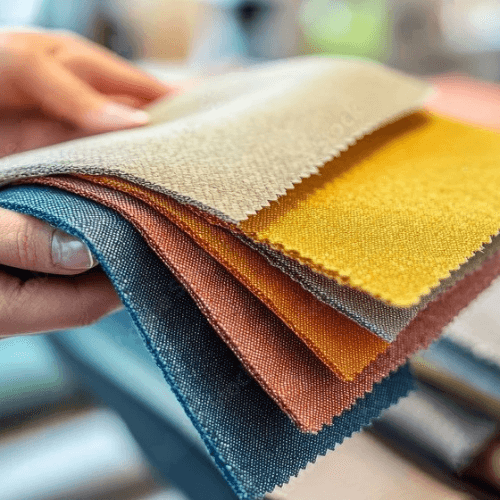Eco-Friendly Fabrics: A Growing Demand in Global Markets

As global awareness of environmental issues continues to rise, the demand for eco-friendly fabrics has surged dramatically. Consumers are increasingly prioritizing sustainability in their purchasing decisions, prompting manufacturers to adopt greener practices and materials. This blog examines the growing demand for eco-friendly fabrics, highlighting key trends and the significant role of Shaoxing Keqiao, China, in the textile market.
### The Rise of Eco-Friendly Fabrics
The shift towards sustainable textiles is driven by several factors:
1.Consumer Awareness:** Today’s consumers are more informed about the environmental impact of their purchases. The fashion industry, known for its significant ecological footprint, is under pressure to adopt sustainable practices. Reports indicate that millennials and Gen Z are leading this movement, favoring brands that prioritize sustainability.
2.Health Concerns:** Traditional textile manufacturing often involves harmful chemicals that can pose health risks to consumers and workers alike. Eco-friendly fabrics made from organic or non-toxic materials are becoming increasingly popular as consumers seek safer alternatives.
3.Regulatory Pressure:** Governments worldwide are implementing stricter regulations regarding environmental practices in manufacturing. Companies that fail to comply with these regulations risk facing penalties and losing market access.
### Key Trends in Eco-Friendly Fabrics
The eco-friendly fabric market is evolving rapidly, with several trends shaping its future:
– **Sustainable Materials:** Fabrics made from organic cotton, hemp, Tencel (made from sustainably sourced wood pulp), and recycled materials are gaining traction. These materials not only reduce environmental impact but also appeal to consumers seeking high-quality products.
– **Innovative Production Techniques:** Advances in technology are enabling manufacturers to produce eco-friendly fabrics more efficiently. Techniques such as waterless dyeing and low-impact finishing processes help minimize waste and resource consumption.
– **Circular Economy Practices:** The concept of a circular economy—where products are designed for reuse and recycling—is becoming increasingly relevant in the textile industry. Brands are exploring ways to repurpose textile waste into new products, reducing overall waste generation.
### Shaoxing Keqiao: A Hub for Sustainable Textiles
Shaoxing Keqiao, located in Zhejiang Province, China, is one of the largest textile production centers globally and plays a pivotal role in the shift towards sustainable practices within the industry:
– **Diverse Fabric Offerings:** Keqiao is known for its wide range of high-quality fabrics, including cotton, polyester, silk, and blended materials. This diversity allows manufacturers to cater to various markets while incorporating sustainable options into their product lines.
– **Commitment to Sustainability:** The Keqiao fabric industry has proactively adopted sustainable practices to mitigate environmental impacts. From eco-friendly dyeing processes that reduce water usage to energy-efficient manufacturing techniques, Keqiao is setting new industry standards.
– **Innovations in Fabric Technology:** The region is also embracing technological advancements that enhance sustainability. For example, the use of natural dyes and advanced recycling methods demonstrates Keqiao’s commitment to reducing its ecological footprint.
– **Global Influence:** As a major player in the global textile market, Keqiao’s adoption of sustainable practices influences other regions to follow suit. Its capacity to produce large quantities of fabric efficiently while prioritizing sustainability makes it an invaluable resource for international garment production.
### Conclusion
The demand for eco-friendly fabrics continues to grow as consumers become more conscious of their purchasing decisions and the environmental impact of their choices. The textile industry must adapt by embracing sustainable materials and production practices that align with these changing preferences.
Shaoxing Keqiao stands at the forefront of this transformation, demonstrating how a commitment to sustainability can drive innovation and meet global market demands. By prioritizing ethical sourcing and environmentally friendly practices, textile manufacturers can not only enhance their brand reputation but also contribute positively to the planet.
As we move forward into an era where sustainability is paramount, embracing eco-friendly fabrics will be essential for success in the competitive textile market. Companies that recognize this trend and act accordingly will be well-positioned to thrive while making a meaningful impact on the environment.






